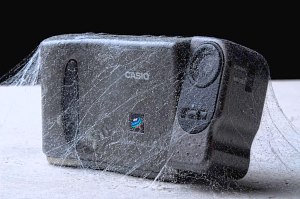Welcome to the Digital Camera Museum

Vintage digital cameras are not just some pieces of outdated technology!
Junk to some, collectible items to others. Everybody has a different opinion when it comes to early digitl cameras from "the last century". Therefore the purpose and goal of this site is to not only create another website for collectors and enthusiasts but a portal and permanent resource for vintage digital cameras. To provide a "virtual digital museum" for digital cameras from 1975 - 2000. To preserve knowledge before it is lost. In 1975, when Sasson designed the first portable all-electronic, solid-state camera, there was no world wide web, no public internet, not even BBS. Bulletin boards and newsgroups emerged in the eighties. Even in the mid to late nineties there were only few sites providing accurate details on digital cameras. Even back then those sites were incomplete. With the internet growing and newer cameras surfacing on the market, most manufacturers deleted their web content of discontinued cameras. Also, not every camera on the market was covered in a review, test or news column. Some were only seen on tech fairs or mentioned briefly in a footnote. Apart from only one or two very good websites, there is no complete, let alone chronologically accurate source on vintage digital cameras on the internet today. Let's try and change that.
Today you can go to a mall and buy any kind of digital camera you like. Regardless of price, color, features and resolution. A new digicam comes out almost every two weeks. Since the turn of this century almost every manufacturer and company wanted a piece of the pie which led to a real OEM model chaos. Taiwan, Malaysia and other countries were mass producing cheap camera bodies for small, medium and big companies. The body was labeled and sold under their brand. The most popular of those OEM models was the Jenoptik JD11 Entrance. This small and simple camera was manufactured by MINTON from 1998 - 2002 with VGA and XGA resolution. There are at least twenty models from thirteen different labels that I know of.
Nowadays cameras are available in cell phones, handhelds, toys, pens, pda's, glasses and lots of other gadgets. Almost everyone can afford a digital camera today and millions own at least one model. But let's take a look back to the early days of digital photography. Back to the time when cameras were above all expensive. Back to the time when cameras had swivel lenses and attachable monitors. When black, silver and white where the only camera body colors. When flash memory cards were almost as expensive as the camera itself. When image transfer to a computer required tons of time. So why DIGICAMmuseum? Well, digicam has become a popular abbreviation for digital camera, both in english and german language in the nineteen nineties. Before that, the term digicam was used for television cameras in broadcasting. The earliest record I could find for the term digicam goes back to the 1980 Ampex BCC-20 television camera dubbed 'DigiCam' because it had a 'computer in it's head'. The term digicam (in reference to digital cameras) was officially used at the Systems '91 fair in munich to promote the Dycam Model 1 in germany long before the term became popular. Hence the name stuck with me and that's why I used it.



